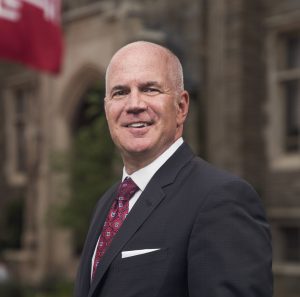No matter what discipline you are in, it is hard to ignore the major shift from traditional journal publishing to open access publishing. In honor of Open Access Week 2017, we are celebrating faculty at Temple University who support open scholarship in a variety of ways.
One of these faculty members is David Sarwer, the Associate Dean for Research, and Director of the Center for Obesity Research and Education at the College of Public Health. Sarwer is also the Editor-in-Chief of an open access journal, Obesity Science & Practice. He sat down with Biomedical & Research Services Librarian (Ginsburg Health Sciences Library) Stephanie Roth to discuss his experiences as the editor of a new open access journal.
Please tell us more about Obesity Science & Practice. How did you become involved as the Editor-in-Chief?
Obesity Science & Practice is a Wiley journal. They publish four other journals in the area of obesity and were quick to recognize that there was an increasing number of high quality papers not making the cut in those journals. When they approached me about serving as the inaugural Editor-in-Chief, I was still skeptical about publishing in open access journals. The more the Wiley team taught me about their approach, I came to believe that open access publishing was likely to play a significant role in the future of academic publishing.
What gave you confidence to believe in open access?
The early success of the journal has given all of us a great deal of confidence. We have quickly moved to publishing four issues a year. We now receive a steady stream of articles that are either direct submissions to the journal or are referred to us by other Wiley obesity journals. Many of the papers published in the journal have come from internationally recognized authorities in the field of obesity. All of these developments give me a great deal of confidence about the future of the journal and open access publishing more generally.
When you first heard about open access publishing what were your immediate thoughts?
Like everyone else, I was familiar with the old school publishing model. So, I was hesitant and skeptical. The Wiley team did a great job to make me comfortable that open access represented the path to the future.
Did you ever publish to an open access journal prior to becoming the editor of one?
No, but I wouldn’t hesitate to publish in a high quality, reputable open access journal today.
Now as an editor, what are your thoughts about open access publishing?
I am very impressed with open access compared to traditional publishing and especially by our journal. The speed at which we are able to process papers and push them out to our readers is a great strength. We have published a number of high quality, impactful papers in the field. Several of them have received mass media coverage as well, which is an important, yet often overlooked aspect of academic productivity.
What has been your experience with OA journals vs. traditional publishing?
I haven’t noticed much of a difference. Many non open access journals are now putting their papers online. That shows the potential growth and acceptability of open access in the future.
What has contributed to more authors embracing your journal?
It has helped that Wiley is well recognized for their journals. That has helped to increase our journal’s credibility. Wiley has also done a good job identifying high quality submissions that were rejected from one of their four other major obesity journals. When a paper is referred to us from one of those journals, we often use the previous reviews to inform the editorial process and decision making. This has allowed us to move papers through the review process quickly.
What are your future plans for the journal?
I would like to stay on our current path of success. We recently moved to publishing four issues a year and continue to receive a steady stream of papers. I would like to see the first impact factor be appropriately robust and to have it grow over time.
Do you provide tools for graduate students or residents to publish in your journal?
At the journal level, we aren’t doing anything specific for graduate students. We do receive a fair amount of submissions from those who may be working on their first papers and launching their own independent careers and that is also encouraging.
What tips would you give to researchers looking to publish in an OA journal?
I would like to encourage them to make sure they don’t discount them. Be thoughtful. Make sure the journal is a legitimate outlet, and not one associated with predatory publishing. Researchers should see open access as an important and central part of academic publishing in the future.
